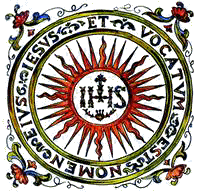ROME, July 6, 2006 (Zenit.org).- As Rome temperatures soar, and the sun reflects off the travertine in the Forum and St. Peter's Square, turning the city into a giant kiln, tourists start to view an old attraction with new eyes: the fountains of Rome.Full article.
While the Trevi and the Four Rivers fountains are always high on people's must-see list, it takes the scorching heat of Roman summer to see these works not only as photo opportunities, but also as examples of the generosity of Papal Rome.
The seventy-odd elegant sculpted fountains, as well as hundreds of simple water spigots, ensure that one never has to go far to find a source of refreshing water. Savvy tourists carry empty bottles to refill as they go along, saving themselves the exorbitant prices of water at drink stands. During these hot July days people gratefully rinse feet, face and hands, cooling down and getting a second wind for the rest of the day's sightseeing.
The constant flow of water through the city has been a source of pride for Rome since its earliest beginnings. Rome was famously founded on seven hills, lifting the first settlements above the level of the Tiber river. The hills are laced with underground springs, and the early population dug wells and cisterns to obtain fresh water, supplementing from the Tiber when necessary...
Wednesday, July 05, 2006
The fountains of Rome
Zenit has an interesting article on the subject. In her youth my mother made a brief sojourn to Europe with some friends. She visited the Nordic countries and determined that she wanted to go home. Her US-bound plane flew out of Italy, and so she stayed in Rome briefly; alas, her intimacy with the city was mostly limited to the cab driver who kept trying to convince her that she needed to see the Collesium, the Vatican, all the great places which were flying by the taxi window. My mother very firmly insisted that all she wanted to do was get Stateside. Somehow she did see the Trevi fountain, however - and she has gushed about it ever since. "Gushed," I know, bad pun...
Subscribe to:
Post Comments (Atom)




















No comments:
Post a Comment